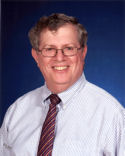by Lloyd A. de Vries
 I was amused recently by some of the letters to the editor in the August American Philatelist (the journal of the American Philatelic Society) and the subsequent discussion in another online stamp collecting discussion venue.
I was amused recently by some of the letters to the editor in the August American Philatelist (the journal of the American Philatelic Society) and the subsequent discussion in another online stamp collecting discussion venue.
There were two subjects in the letters that caught my attention, equally silly, in my opinion.
One was a rehash of the location of the APS headquarters. “Why is it in the middle of nowhere?”
Give it a rest already. We’ve been over this ground several times.
First, my credentials: I was on the APS Board of Directors when we decided that the previous building in State College, Pa., was no longer adequate and chose the former Match Factory in neighboring Bellefonte. I believe I was the deciding vote to purchase the present building, and it wasn’t an easy decision. I daresay I spent more time looking at the issue then than all three letter-writers combined.
There were many contributing factors to my decision, but I’ll cut right to the most important one: The APS staff. I think as a whole they’re wonderful, and I doubt if most of them would have made the move to another metro area.
Many had working spouses, or were firmly established in the State College area. (APS employees tend to stay for a long period of time.)
Besides the excellence of the staff, there would have been the time required to train new staffers: The jargon (“bourse,” “expertise,” and so on), how to handle stamps, and so on.
Because the cost of living is much higher in any major metropolitan area, we would have had to pay the staffers, or their replacements, more money.
Speaking of money, real estate would have cost more in a major metropolitan area.
Oh, and about those “metropolitan areas:” Everyone had a different idea of what those are.
Someone threatened to sue if we didn’t choose Chicago.
I remember talking to another member who lived in New York City back then, who was insisting the APS should move to a “major metropolitan area.”
“You’re right,” I said. “We’re looking into Los Angeles.”
“No, I mean a MAJOR metropolitan area.”
Okay.
The other idea espoused in a letter, and then taken ad absurdum online, was to open branch offices of the APS around the country, each in a (wait for it) major metropolitan area.
The cost of renting office space in one big city plus paying someone’s salary there would be astronomical, but several?
And the question was raised online, what would the APS Branch Office staffer do?
Be outreach for the society, helping local stamp organizations, answering questions and glad-handing potential donors were some of the answers.
Is that really a full-time job? Well, the offices could be staffed by volunteers. I’m not sure the APS could find 10-20 volunteers to sit in an office 40 hours a week, and there’s still the issues of rent, phone, Internet, furniture, and so on.
One supporter then said that the offices didn’t have to be downtown, but could be in “outlying strip malls.” Well, as a resident of a municipality with the New York (major) metropolitan area, I can see where that would lead: “Why didn’t you choose MY outlying strip mall?”
Stamp society officials hear these “pie in the sky” suggestions all the time. Another perennial is that the APS or another stamp society should advertise in AARP, the magazine for over-50s, either to promote itself or to promote stamp collecting.
The cheapest rate I found for the magazine was $45,260 for a sixth of a page. Black-and-white. One ad. One issue.
The APS only charges $45 a year for membership.
People tell me all the time (and did when I was on the APS board) that my stamp organization should do this, or should do that. Some of these suggestions are as silly as branch offices in outlying strip malls. Some actually have potential
But when I’ve asked the person making the suggestion if he or she would chair the program or spearhead the project, I’ve been turned down.
“I’m too busy.”
“I’m not the right person for this.”
“I’m not in good health.”
Funny how that works, isn’t it?




These wacky ideas have an interesting life cycle. 3 or 4 individuals quote each other though none of them have any experience or expertise in the area. They tell each other they’re right and everyone else is wrong, ignore the most obvious problems with their ideas, and refuse to implement their own pet proposals. And, of course, reject any other views or facts. And then they do it all over again. lol.